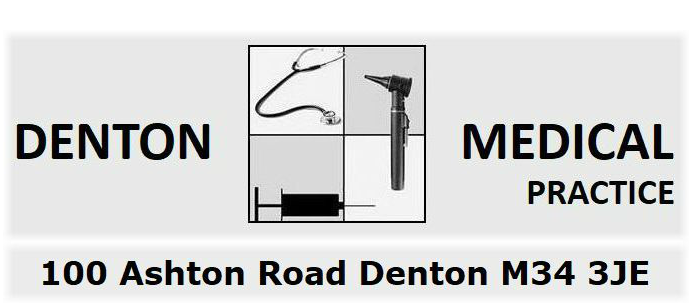Patient Accessible Information

This is a new standard introduced by NHS England which has been developed to support the Equality Act.
The purpose of the standard is to make sure that people with a disability, impairment or sensory loss have access to information that they can understand and get any communication support they might need. This also applies to parents and carers of these people.
This does not apply to:
- Patients who prefer to get their information in other formats that do not have a disability or sensory loss.
- Foreign language translation.
- People who have difficulty reading or understanding information for reasons other than a disability, impairment or sensory loss for example due to low literacy or a learning difficulty like dyslexia as distinct from a learning disability.
For example they might need their information in a format other than standard printed letters; such as braille, easy read, via email etc.
Also they may need help with communication through use of a British Sign Language (BSL) interpreter, deafblind manual interpreter, an advocate etc.
What is included in the standard?
- Ask people if they have any information or communication needs and find out what they are.
- Record those needs.
- Highlight in the patient records what the needs are and how they should be met.
- Share these needs with other NHS adult social care providers with their consent.
- Make sure that they receive information in a way that meets their needs and that they get any communication support that they need.
More information about the standard can be found at NHS Accessible Information Standard
NHS Accessible Information Standard with subtitles.
If you need us to send you information in a different format to our standard letter, for example large print or easy read, or if you need help to communicate with us, for example because you use British Sign Language, please let us know. If these needs change in the future please let us know so that we can update your record.
Introduction to our Policy
The Accessible Information Standard directs and defines a specific, consistent approach to identifying, recording, flagging, sharing and meeting the information and communication support needs of patients, service users, carers and parents, where those needs relate to a disability, impairment or sensory loss.
It is of particular relevance to individuals who are blind, deaf or who have a learning disability, although it will support anyone with information or communication needs relating to a disability, impairment or sensory loss, for example people who have aphasia, autism or a mental health condition which affects their ability to communicate.
Identify Needs
- The patient registration form includes questions on communication and information needs which is used for all new patients. Patients are also asked if they have a communication passport and if they consent to sharing their information and communication needs with other organisations involved in their treatment or care.
- Existing patients will be asked their communication and information needs when possible when they come into the practice, or if they have a new diagnosis or produce a letter or certificate which makes them eligible for the standard.
- Patients that meet the criteria for this standard will identify which information formats, contact methods, communications professionals and communications support professionals they need.
- Carers are added to the carers register. If the carer is one of our registered patients their information and communication needs will be captured at registration or on their next visit to the practice.
Record Needs
- The needs identified on the patient registration form are entered using the EMIS registration template.
- We will not record needs on paper records, as there is an equivalent electronic record for these and all communications will be driven from the electronic record.
- For Carers, if the carer is one of our registered patients and have an identified information or communication need, an alert will be added to the caree or child record to advise staff to load the carer or parent record to check their needs. The protocol alert will automatically trigger for identified needs for the carer.
Flag Needs
- If a patient has been asked what their information and communication needs are, they will be allocated a read code. An EMIS search can be run to determine how many patients have not been asked about their needs. An EMIS protocol alert could also be activated to prompt for patients that have not been asked.
- Any patient that has one of the needs recorded will trigger an EMIS alert.
- Any patient that has identified communication needs will be set up with an alert so that members of staff are aware when booking appointments, and can arrange for interpreters or longer appointments, or anything else that is needed for their appointment. To see their identified needs the patient record needs to be opened on EMIS.
- Paper records will not be marked as electronic records are used as the primary record.
Meet Needs
- All in-house created patient information - letters, forms, leaflets should be created in plain language where possible. The bottom of these letters should include the following paragraph – 'If you need this letter or information in another format, or if you need help communicating with us, please let us know. Examples include letters in large print or easy read format, or using a British Sign Language interpreter. If your needs change please let us know so that we can update your record'.
- Online translation using the World Lingo website can be used to have a written conversation with someone who is deaf or hard of hearing.
Consent
- For new patients, on the new patient registration form, we will ask if they consent to sharing their information and communication needs with other organisations involved in their treatment or care.
- For existing patients on the accessible information form, we will ask if they consent to sharing their information and communication needs with other organisations involved in their treatment or care.
- Consent to share information and communication needs with other organisations involved in their treatment or care will then be recorded which allows for the summary care record to include additional information.
- Consent is also required when patients first sign up to use the email or SMS text reminders services. Leaflets and consent forms are available for this and are included in new patient registration packs.
Sharing Identified Needs
- NHS e-referrals – recorded needs will be automatically added to the e-referral document.
- Other Referrals methods have been reviewed to ensure that information and communication needs are shared.
- Summary Care Records – recorded needs will automatically be shared as part of the additional record once consent is recorded.
Training
How will we train staff.
- All staff will have a one off training on Accessible Information Standard.
- Communicating with patients with sensory loss – Disability Matters e-learning, Action on Hearing Loss, Deafblind UK, The Makaton Charity?
- Communicating with patients with a learning disability – Blue Stream Academy e-learning, Disability Matters e-learning?
Monitoring
- To monitor whether the patient is getting what they need we will run an annual audit of patients with recorded needs to see if they have had appointments or information sent to them & if this was done to meet their needs. Also to check if interpreters were present if they were required. Any breaches will be raised as a significant event.
- When this policy is due for renewal the patient accessible information website will be checked for any updates.
